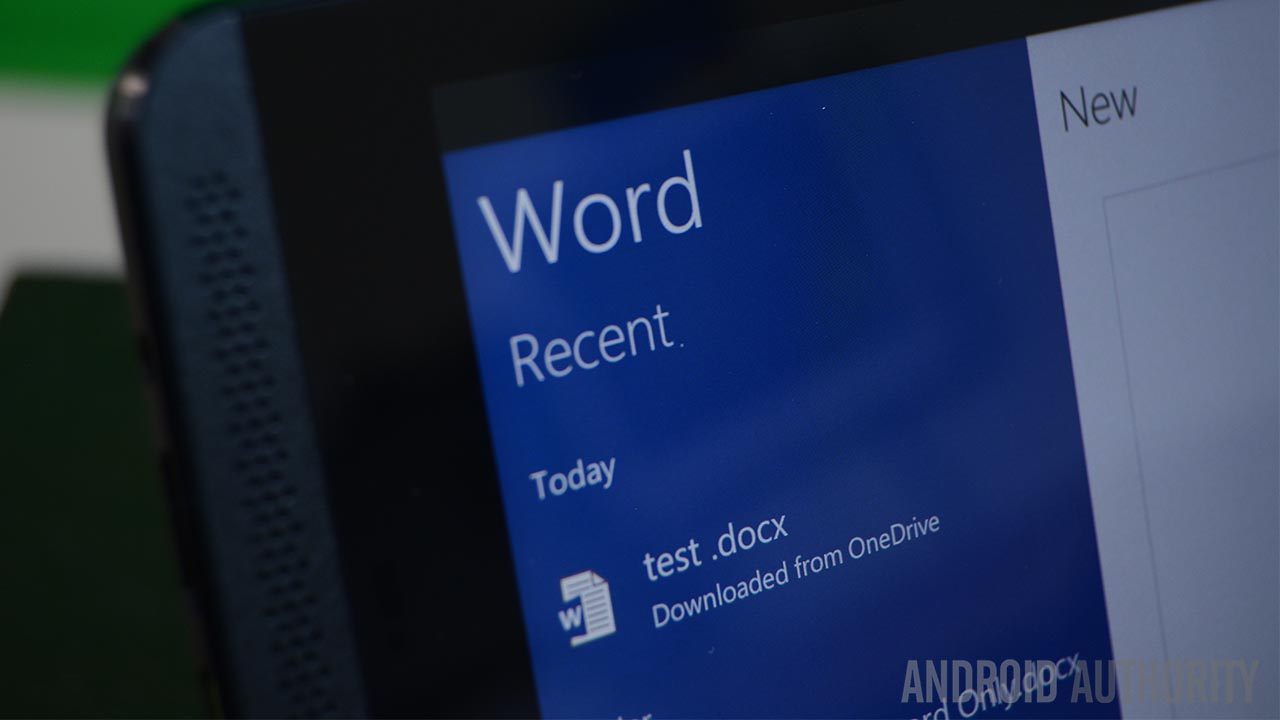
The 2010s was a big decade for mobile technology. Android and iOS were only a year or two old at that point, and both of them had a lot of growth ahead. Smartphones went from a single-core processor to eight cores, less than 1GB of RAM up to 12GB, and less than 4GB of storage up to 1TB. The software also evolved over the span of the decade. New design standards became the norm, phones could handle heavier workloads, and people just demanded more from the little computers in their pockets. Software took massive leaps in the 2010s just like hardware did. Let's identify some of the big players that had a major impact during the last decade.
For the purposes of this list, we're going to omit some obvious choices. Some of those choices include Facebook, Gmail, YouTube, and Twitter. Those apps are attached to already popular services before the decade began and they were going to be popular anyway. Additionally, we're going to sidestep viral apps like Timely and Prisma because they were fun at the time but generally didn't really leave a lasting impact. The list is in alphabetical order.
More posts about the best Android apps!
Adobe apps
Price: Free
In 2010, Android lacked a lot of things. Among them were a decent photo editor, video editor, and other tools for artists and photographers. A lot of people opined the lack of a Photoshop for Android until Adobe released a Photoshop for Android. The software giant also released two other Photoshop apps, Illustrator Draw, a Lightroom Mobile app, and capped off the decade with Adobe Premiere Rush. Adobe also has one of the most recognizable PDF readers with Adobe Acrobat along with an outstanding document scanner with Adobe Scan. It'll be some time before the mobile versions of these apps match the power and functionality of the desktop counterparts, but the groundwork is set.
Adobe had help from other developers in this space as well. Other prominent apps in the category include Snapseed, PowerDirector, ActionDirector, KineMaster, Pixlr, AirBrush, SketchBook by Autodesk, PicsArt, and many others. It's actually rather encouraging to see that we started the decade with practically nothing and ended up with a fairly robust set of options. Rest assured, creator-specific tools won't be a problem for mobile phone owners going into the next decade. We're all just waiting for refinement at this point.

Bluestacks
Price: Free / $4 per month / $40 per year
Bluestacks isn't technically an app, but it's easily the most popular Android emulator for PC. Bluestacks may not have been the first, but it's definitely the most influential of the crop. The app started a whole industry for people who want to play mobile games or use mobile apps on their desktop PC. Bluestacks wasn't just popular — it also partnered with MSI to create the MSI App Player app for that company's laptops. Toward the end of the decade, the popularity of the platform even encouraged official emulators for newer mobile games like PUBG Mobile and Call of Duty: Mobile. It was never the big thing to talk about, but it has enjoyed ten years of relative success since its launch in 2009.
Of course, there are other outstanding emulators as well, including Nox, KoPlayer, and GameLoop. The industry was also boosted by former great emulators like LeapDroid and Andy, at least until Andy's shady practices made it impossible to recommend to people and Google bought LeapDroid. The emulator market isn't sexy, but it's popular and Bluestacks has stood at the top of it for basically the whole decade.
Duolingo
Price: Free / $9.99 per month
Duolingo is arguably the most popular language learning app on the Google Play Store. It hit every single check mark. It's completely free to use for all of its languages. Additionally, it's fun to use, utilizes games and such to keep people engaged, and it's good for people of all ages. It hit the Play Store like a freight train and easily garnered our pick for the top Android app of 2013. The app has 100 million downloads at least, over 8 million reviews in the Play Store, and despite introducing a premium option, people still love it. The premium version adds some extras that aren't necessary as the core app still functions the same way.
There are other great learning apps. Khan Academy (Khan Academy Kids), Udemy, Memrise, Mondly, Rosetta Stone, edX, LinkedIn Learning, Coursera, Brainly, and many others. However, Duolingo struck a chord that helped spark mobile education in the right way. Google Play made it app of the year in both 2013 and 2014. It's not so much in the public eye these days, but the decade wouldn't have been the same without it.

Google Assistant vs Amazon Alexa vs Siri
Price: Free
Siri launched in 2010 to mass praise. It generated memes, was quite ahead of its time, and came stock on all new iPhones from that point forward. Google's assistant began life humbly enough as Google Now in the early 2010s before becoming Google Assistant in 2016. Finally, Amazon Alexa joined the chat in 2014. The three immediately began competing with one another for market share and attention. In addition, all three apps eventually moved on to smart home gadgets like the Google Home, the Amazon Echo, and the Apple HomePod where the battle rages to this day. On the app side of things, though, the general consensus is that Google Assistant is the top dog in that fight.
All three services have their ups and downs, controversies and successes, and pros and cons. They all spawned memes, appeared in TV shows, and have their own sections at your local Best Buy. In fact, if we had to pick just one, these three apps might be the biggest and most impactful apps of the whole decade. However, 2019 ended with the three coming together to make smart homes suck less so this fight might be over sooner rather than later.

Google Drive vs Microsoft Office
Price: Free / Varies
Google Drive and Microsoft Office are the two dominant office suites on Android. Google Drive is the more popular option but Microsoft Office has its fair share of pros as well. Google Drive entered into the fray swinging and with its 15GB of free storage and completely free office suite. It quickly became a favorite for college students, high school students, and other highly valuable demographics. Meanwhile, Microsoft adapted beautifully to modern times with a reasonably cheap subscription package for its mobile and desktop apps.
This fight wasn't as public as the virtual assistant one, but it's one that helped shape the mobile office landscape nevertheless. To date, there are few options with as much power as these two and most people and websites alike generally ring these off as the best first and second options. Much like with Adobe's apps, mobile didn't have a solid office experience at the start of the decade. Now it has two.

More posts about Android app and game lists!
IFTTT and Tasker
Price: Free / $3.49 respectively
Unlike most of the multiple entrants on this list, IFTTT and Tasker aren't really competitors. They do similar things, but they never felt or acted like competitors. IFTTT is simpler and Tasker is more hardcore, but they both work to help people automate tasks. Tasker started the decade on top by allowing Android users to automate various tasks. It was long considered one of the best power user Android apps of all time. IFTTT, on the other hand, tackled more modern problems and supports more recent tech like smart home stuff and easier stuff like downloading images from Instagram.
Admittedly, IFTTT is the automation app to beat these days as Google Play's continuous privacy policy updates keep hampering Tasker's progress. You can use it to automatically do a ton of things and it has support for virtual assistant apps like Google Assistant and Amazon Alexa. In fact, it boasts direct support for over 600 apps and a variety of hardware including Fitbit, Sonos speakers, and Honeywell. It may not be the power hitter in terms of name recognition like many on this list, but unless something drastic changes soon, IFTTT is going to play a big role in the next decade.
Instagram and Snapchat
Price: Free
We omitted Facebook and Twitter because both were already popular when the decade began. However, Instagram launched in 2010 and Snapchat launched in 2011. Both apps began a seismic shift from standard, old school social media to a more mobile-centric one. Both apps skyrocketed in popularity over the course of the decade and both have similar ideas with different executions. Instagram is a photo-first social app with a stories feature for keeping up to date with what people are doing. Snapchat is a photo-first messenger service with other messaging features and its own stories feature.
These apps hit the internet in a big way. Many existing social media apps borrowed Snapchat's Stories feature, including Instagram. Facebook competed by outright buying Instagram. Both apps had massive redesigns, feature additions, and sometimes even issues over the course of the decade. However, both are about as strong now as they can possibly be. Both apps made mobile photography a thing and that has helped shape the mobile landscape for the rest of the decade. Why else do you think reviewers focus so much on cameras? It's because of the 1.2 billion people who use these two apps.

Nova Launcher
Price: Free / $4.99
Nova Launcher is one of the most obvious choices on this list and a lot of people are going to skip right by this paragraph because of it. Let's just get right down to the basics. Nova Launcher launched nearly a decade ago and has been one of the easiest recommendations in the entire Play Store. It is one of the most popular launchers on Android, it manages to remain modern with each passing year, and it's just customizable enough to fit most people's needs.
If I had a nickel for every time I saw someone say that another person should just use Nova Launcher, I could retire on my own private island. There have been some other amazing launchers, including Action Launcher 3, Lawnchair Launcher, and some young upstarts like Hyperion Launcher and Evie Launcher. However, aside from raw download numbers (Hola Launcher and GO Launcher have more), Nova is the top dog and it spent very nearly the entire decade there. That's some outstanding longevity.

Sling TV
Price: Free trial / $30-$45 per month + options
Sling TV is the live TV app that started the live TV app trend on mobile. It wasn't the first like it and the history dates back quite a few years. However, Sling TV is the first that saw enough success to be a thing. The industry summarily expanded with Hulu TV, YouTube TV, AT&T TV (formerly DirecTV Now), and PlayStation Vue before Vue went down in 2019. However, Sling TV is still a pioneer in the segment, even if some of the competitors have better features.
Sling TV does have its fair share of good features, though. Its a-la-carte style is such a difference from standard cable TV and even other live TV streaming apps that it remains one of the most unique options in the segment. Of course, the competitors get partial credit for making this a thing that people have choices for and we wouldn't be shocked if cable TV subscriptions continued to drop unless cable TV providers modernized their options.
Swype Keyboard
Price: Free / $2.99
Swype Keyboard was easily the most iconic app of the first half of the decade. Gboard and SwiftKey along with Fleksy and others eventually usurped the iconic Swype but most of them had to copy Swype's hallmark feature in order to do so. Swype was the first keyboard with gesture typing and back in the early 2010s, and that gesture typing was outstanding. It also captured a Guinness World Record for fastest text message in 2010 and that might be the best marketing boost it could've dreamed of. The app spent years as a pre-installed app before its Play Store release and it was a good day when it did.
However, like all products, Swype fell victim to copycats. Gboard and Swiftkey added gesture typing in short order to maintain their spots at the top of the keyboard ladder. Other keyboards like Fleksy also use gestures as well but in more unique ways. Swype was the first, but now nearly every Android keyboard has the feature. Unfortunately, all of those keyboards, plus a slowdown in development, squeezed Swype out of the market and it officially closed its doors in 2018.

More posts about Android games!
If we missed any great Android apps, tell us about them in the comments. You can also click here to check out our latest Android apps and games lists!
from Android Authority https://ift.tt/37qwyu4
via IFTTT




















No comments:
Post a Comment